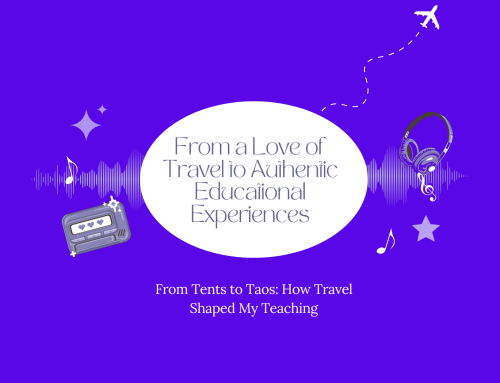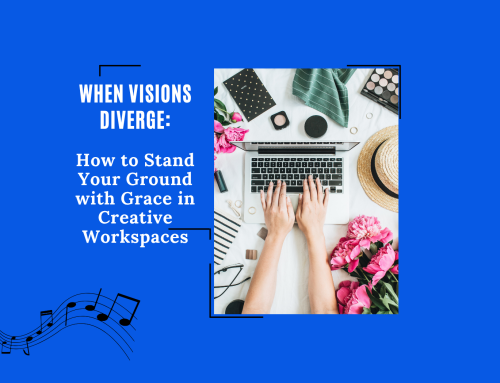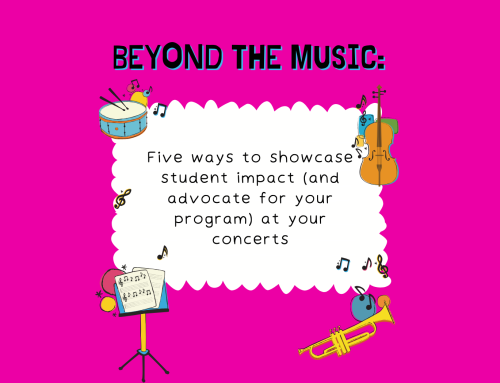I am often called “just the music teacher.” And I may or may not also be tired of non-teachers looking at me and asking, “Soooo, how are you actually working during COVID?” I will never forget it. One co-worker even asked me, “So Darlene, what do you do now on Zoom? Just cha-cha the whole time?”
I have a shirt from Prince Rhythm Company created by Franklin Willis that says, “More Than a Music Teacher.” Wow, does it ring true this school year.
When the pandemic forced schools to close down last March, I taught full-time general music and chorus at two different elementary schools, instructed about a dozen private piano students, oversaw a program for group music classes at a studio, and accompanied a children’s chorus. I worked six days a week, and most of those days were up to 13 hours long, not including grading, writing up assignments, replying to emails, and designing new content. Saying I was exhausted was an understatement.
Through this pandemic, it became more apparent what truly mattered in education (big hint: passive demonstration of musical knowledge was not one of them). My teaching situation, as of now, is similar to what it was last spring. I teach completely virtually: I do Zoom classes every other week and provide weekly asynchronous music work. The schools in my district slowly started opening up into hybrid learning recently. Due to the complicated nature of my teaching schedule and the fact that I teach approximately 1000 students, I still have to continue instructing through a screen while other elementary teachers get to see their students in person. I have several young students who simply do not understand why they get to go back to school to see their friends and classroom teacher but still won’t get to see me.
When those same non-teachers ask me what teaching looks like now, I ask myself, “What do I say first?” We are researching material, lesson creating from scratch, re-designing content for platforms like Google Classroom and Seesaw, and providing tech support for teachers, students, and even parents. My Zoom classes are only 20 minutes with each class – and it is not enough. Most of the time, students want to share about their day or demonstrate the new gymnastic move they learned. I see kids lying on their beds at home, wearing masks while surrounded by plexiglass in a classroom, or trying to focus at a tutoring program with other kids running around in the background. I see foreheads, side profiles, forehead closeups, and sometimes no faces at all.
Re-defining SEL
Social and Emotional Learning (SEL) has a different meaning this year. As I have been trying to implement culturally responsive SEL practices, I have been told by other colleagues that it was “another thing we are being asked to do” or “another thing to know” among all the education buzzwords. I feel that the conversation needs to be about what is “good enough” versus what “absolutely needs to change.”
I will admit that there are definitely days (that somehow feel like weeks) where I can only put so much mental energy into planning and grading throughout the workweek. Those are the days when I just need an “easy” lesson. But I have to pause and ask myself:
-
Is this “easy” because it is low-prep work for me?
-
Is it “easy” because it is also low-involvement for my students because this is what they need, too?
-
Is this “easy” assignment also “busy work,” or will students feel like purposeful music makers or make meaningful connections through this task?
-
Have I quickly picked up this “easy” resource without researching the songs, looking at the illustrations, and examining the bias of the material?
These are a few of the many questions that run through my mind.
I was over it. I was tired of seeing strategies that were only “one-size fits all” or only made for students who all experienced emotions the same way. I was tired of being in conversations with colleagues who believed that students in the music classroom should only do “music-related” tasks. Talking about emotions? Our identity? Other cultures? “No, I need time to do my recorder unit!”
What is the best for our kids?
It is tempting to do the “bare minimum,” which can be pushing out lessons that are strictly about musical concepts, including no assessment, no composing, no chance for student feedback. It makes no sense to me when people tell me “what you have is good enough” when I see that the material has racist roots or has no consideration of student input, assessment, and relevance. Is our work “good enough” if we are aware that this shallow work oppresses others? If there is no student interest? If our music work is just “another thing to do”? Is that really our best?
I have also been tempted to do easy lessons that have no connection to students just so I have one more hour to myself. That one hour can make such a difference. I have often wrestled with stretching myself because I know the lesson I am about to design from scratch will be enjoyable for a particular class. Then there are days where I feel like I do not have the mental capacity to respond to any more emails or do any more tasks related to work. That is when the boundaries have to go up.
Is our work “good enough” if we are aware that this shallow work oppresses others? If there is no student interest? If our music work is just “another thing to do”? Is that really our best?
I am resisting the urge that “what I am already doing is SEL” because that gives a false impression that continuing a dominant culture-centered, teacher-focused approach is already meeting our diverse students’ social and emotional needs. I had to resist the idea that creating student-centered learning is equivalent to putting a check box to fulfilling SEL skills.
While I am implementing a variety of SEL strategies with my students, I also continue to practice SEL on myself. An example would be how I use self-awareness, especially during a stressful workweek. Examples of questions I ask myself are:
-
Why am I feeling anxious right now?
-
What is the circumstance I am in that is causing me to feel this way?
-
What does my body tell me right now? What does my body need?
-
How do my Filipino identity and my cultural upbringing play a factor in my current work ethic and my view on self-care?
Some of my go-to strategies to practice self-care as an educator are:
-
Drinking lots of water
-
Taking intentional deep breaths throughout the day
-
Journaling my gratitudes
-
Exercising and dancing to my favorite workout videos on YouTube
-
Eating nourishing foods but also being okay to treat myself out once in a while
It is okay to not be okay, music teacher friend. This feels like a lot of work. I feel like a lot of that weight also comes from the fact that we care. We care about music, we care about students, and we care for music education to flourish in the next generation.
But let us continue to care for ourselves and our community during this time.




Leave A Comment